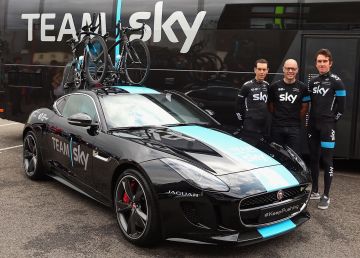Jaguar Car Images Free Download


Jaguar XJ 3.0 D-S Supersport (X351) Overview Manufacturer Production 1968–present Body and chassis () The Jaguar XJ is the name of a series of full-size luxury cars sold by the British automobile brand, since 1968. Since 1970 they have been Jaguar's flagship.
The original model was the last Jaguar saloon to have had the input of, the company's founder, and the model has been featured in countless media and high-profile appearances. The was launched in 2009. It is one of the cars used by the British royal family and an is used for transporting the UK Prime Minister. Jaguar XJ6 (Early Series I) An upmarket version was marketed under the brand and called the, continuing the name from the version of the. The car was introduced in September 1968.
The Jaguar XJ is the name of a series of full-size luxury cars sold by the British automobile brand, Jaguar Cars since 1968. Since 1970 they have been Jaguar. Download free pictures about Jaguar, Car, Vehicle, Auto, Style from Pixabay's library of over 1300000 public domain photos, illustrations and vectors - 1366978.
Power-assisted steering and leather upholstery were standard on the 2.8 L De Luxe and 4.2 L models and air conditioning was offered as an optional extra on the 4.2 L. Daimler versions were launched in October 1969, in a series of television advertisements featuring Sir William. In these spots, he referred to the car as 'the finest Jaguar ever'. An unusual feature, inherited from the and saloons, was the provision of twin fuel tanks, positioned on each side of the boot / trunk, and filled using two separately lockable filler caps: one on the top of each wing above the rear wheel arches. Kingdom Of Heaven Torrent Download Free. Preliminary reviews of the car were favourable, noting the effective brakes and good ride quality. In March 1970 it was announced that the Borg-Warner Model 8 automatic transmission, which the XJ6 had featured since 1968, would be replaced on the 4.2-litre-engined XJ6 with a Borg-Warner Model 12 unit. The new transmission now had three different forward positions accessed via the selector lever, which effectively enabled performance oriented drivers to hold lower ratios at higher revs to achieve better acceleration.
'Greatly improved shift quality' was also claimed for the new system. Around this time minor changes were made as well, such as moving the rear reflectors from beside to below the rear lights; on the interior the chrome gauge bezels were changed for black ones, to cut down on distracting reflections. In 1972 the option of a long-wheelbase version, providing a 4' increase in leg room for passengers in the back, became available. The XJ12 version was announced in July 1972, featuring simplified grille treatment, and powered by a 5.3 L (coupled to a Borg Warner Model 12). The car as presented at that time was the world's only mass-produced 12-cylinder four-door car, and, with a top speed 'around 140 mph' (225 km/h) as the 'fastest full four-seater available in the world today'.
Although it had been the manufacturer's intention from launch that the XJ would take the twelve-cylinder engine, its installation was nonetheless a tight fit, and providing adequate cooling had evidently been a challenge for the engineers designing the installation. Bonnet/hood louvres such as those fitted on the recently introduced twelve-cylinder were rejected, but the XJ12 featured a complex 'cross-flow' radiator divided into two separated horizontal sections and supported with coolant feeder tanks at each end: the engine fan was geared to rotate at 1¼ times the speed of the engine rpm, subject to a limiter which cut in at a (fan) speed of 1,700 rpm. The fuel system incorporated a relief valve that returned fuel to the tank when pressure in the leads to the carburetters exceeded 1.5 psi to reduce the risk of vapour locks occurring at the engine's high operating temperature, while the car's battery, unusually, benefited from its own thermostatically controlled cooling fan.
The Jaguar XJ12, launched during the summer of 1972, featured a simplified grille. 3,235 of these first generation XJ12s were built. A badge-engineered version, the Daimler Double-Six, was introduced in 1972, reviving the model name of 1926–1938.
Total production figures for the Series 1 Model Production Jaguar XJ6 2.8 swb 19,322 Jaguar XJ6 4.2 swb 59,077 Jaguar XJ6 4.2 lwb 574 Jaguar XJ12 swb 2,474 Jaguar XJ12 lwb 754 Daimler Sovereign 2.8 3,233 Daimler Sovereign 4.2 swb 11,522 Daimler Sovereign 4.2 lwb 386 Daimler Double Six swb 534 Daimler Double Six Vanden Plas 351 Total Production for Series 1 98,227. US-market XJ6 (XJ40) The intended replacement for the Series XJ was code-named XJ40, and development on the all-new car began in the early 1970s (with small scale models being built as early as 1972.) The project suffered a number of delays due to problems at parent company British Leyland and events such as the. The XJ40 was finally introduced in 1986 at the. With the XJ40, Jaguar began to place more emphasis on build quality as well as simplification of the XJ's build process. With 25 per cent fewer body panel pressings required versus the Series XJ, the new process also saved weight, increased the stiffness of the chassis, and reduced cabin noise.



